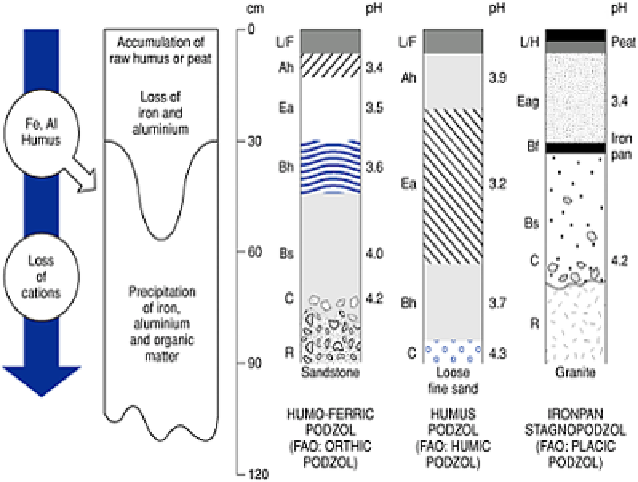Environmental Engineering Reference
In-Depth Information
sites in north Wales and Scotland where acid brown soils under forest preceded the placic
podzols. Thick Bs horizons below the pan suggest that the Eag and Bf horizons of the
present soils resulted from the formation of surface peat between 2000 and 1000 years
BP, following the replacement of a deciduous forest cover by moorland and heathland
plants. Whether this vegetation change resulted from a climatic deterioration or human
influence is not always clear. In this case the placic podzol is a
polycyclic
soil, reflecting
more than one cycle of soil formation.
CLAY FORMATION AND TRANSLOCATION
The formation of clay-sized particles is a fundamental feature of soil formation. The
colloids consist of clay
Figure 19.9
Differents types of podzol soil.
minerals and hydrated oxides of iron and aluminium. In many soils clay content increases
from the A horizon down to the B horizon and then decreases in the C horizon. The B
horizon may acquire its higher clay content in two ways: either percolating waters with
chemical elements in solution are precipitated in the B horizon to form new clay minerals
or percolating waters carry clay minerals from the A horizon in suspension, which are
deposited in the B.
The process of clay mineral formation
in situ
in the B horizon gives cambic B or
weathered B horizons designated as Bw. As the name suggests, the process is
characteristic of cambisols (or brown earths). The type of clay mineral formed in this way

